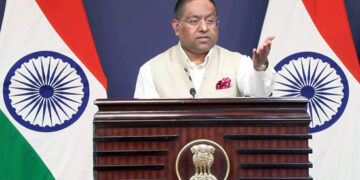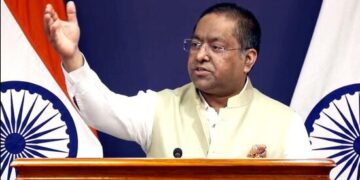In a pivotal commencement to India’s 2024 Lok Sabha elections, the initial phase witnessed a substantial turnout of voters across key states, marking an engaged beginning to the electoral saga. Nearly 64% of eligible voters cast their ballots in Phase 1, setting a spirited tone for the remaining stages of the elections.
The first phase, conducted across 91 constituencies in 20 states on Monday, attracted significant attention and participation from citizens eager to exercise their democratic rights. This phase included states such as Andhra Pradesh, Assam, Bihar, Chhattisgarh, Gujarat, Haryana, Jammu and Kashmir, Maharashtra, Manipur, Meghalaya, Mizoram, Nagaland, Odisha, Sikkim, Telangana, Tripura, Uttar Pradesh, Uttarakhand, West Bengal, and Union Territory of Andaman and Nicobar Islands.
Strong Voter Turnout Across States
States like West Bengal and Tripura experienced particularly notable turnouts, with West Bengal recording a robust 80.43% voter participation, showcasing the enthusiasm and competitive nature of the contest in this crucial eastern state. The Union Territory of Andaman and Nicobar Islands also saw a high turnout of over 70%, reflecting the keen interest of voters in this remote region.
In Bihar, where polling was held for five constituencies, the voter turnout averaged around 56%, indicating a healthy engagement despite some local challenges. Similarly, states like Gujarat, Maharashtra, and Uttar Pradesh witnessed steady participation rates, laying the groundwork for a closely observed electoral battle.
Utilization of Digital Innovations
Moreover, the first phase of the Lok Sabha elections embraced digital innovations with the introduction of QR code-enabled voter slips and the use of mobile apps for real-time monitoring. These advancements aimed at streamlining the electoral process and enhancing transparency were well-received by voters and election officials alike.
Challenges and Celebrations
While the high voter turnout was celebrated as a victory for democracy, certain challenges were reported, including sporadic incidents of violence and technical glitches with electronic voting machines (EVMs) in isolated locations. However, overall, the Election Commission of India expressed satisfaction with the smooth conduct of the polls.
Looking Ahead
As the electoral machinery moves forward, the focus now shifts to the subsequent phases of polling, each carrying its dynamics and implications. The results of these elections will ultimately shape the future trajectory of Indian politics and governance, with voters eagerly anticipating the outcomes.
The Lok Sabha elections, spanning several phases, will culminate in the declaration of results that will determine the composition of India’s 17th Lok Sabha, carrying significant implications for the nation’s socio-economic landscape.








 India
India












